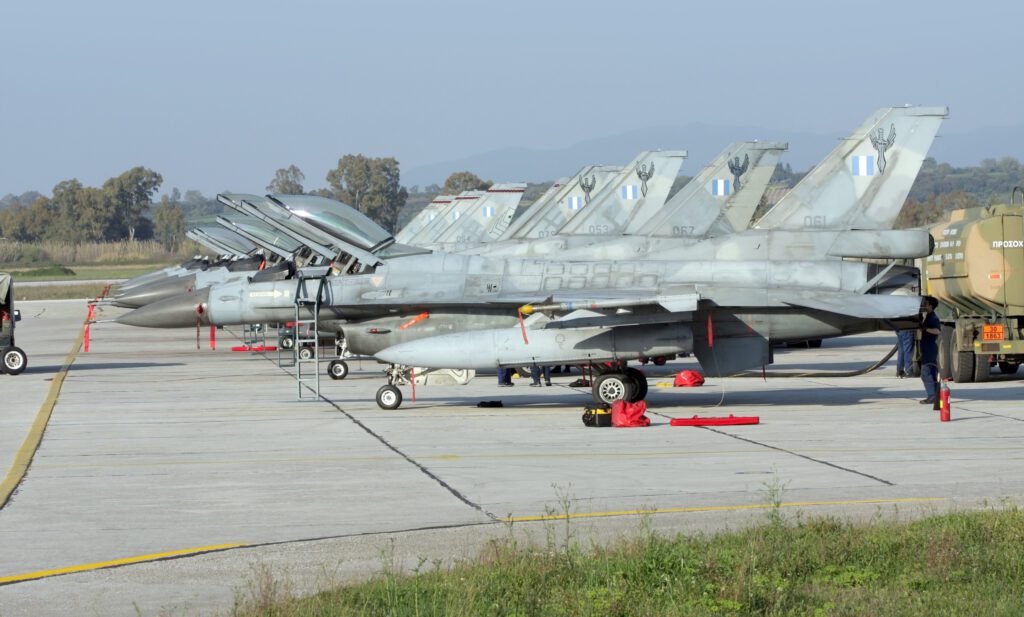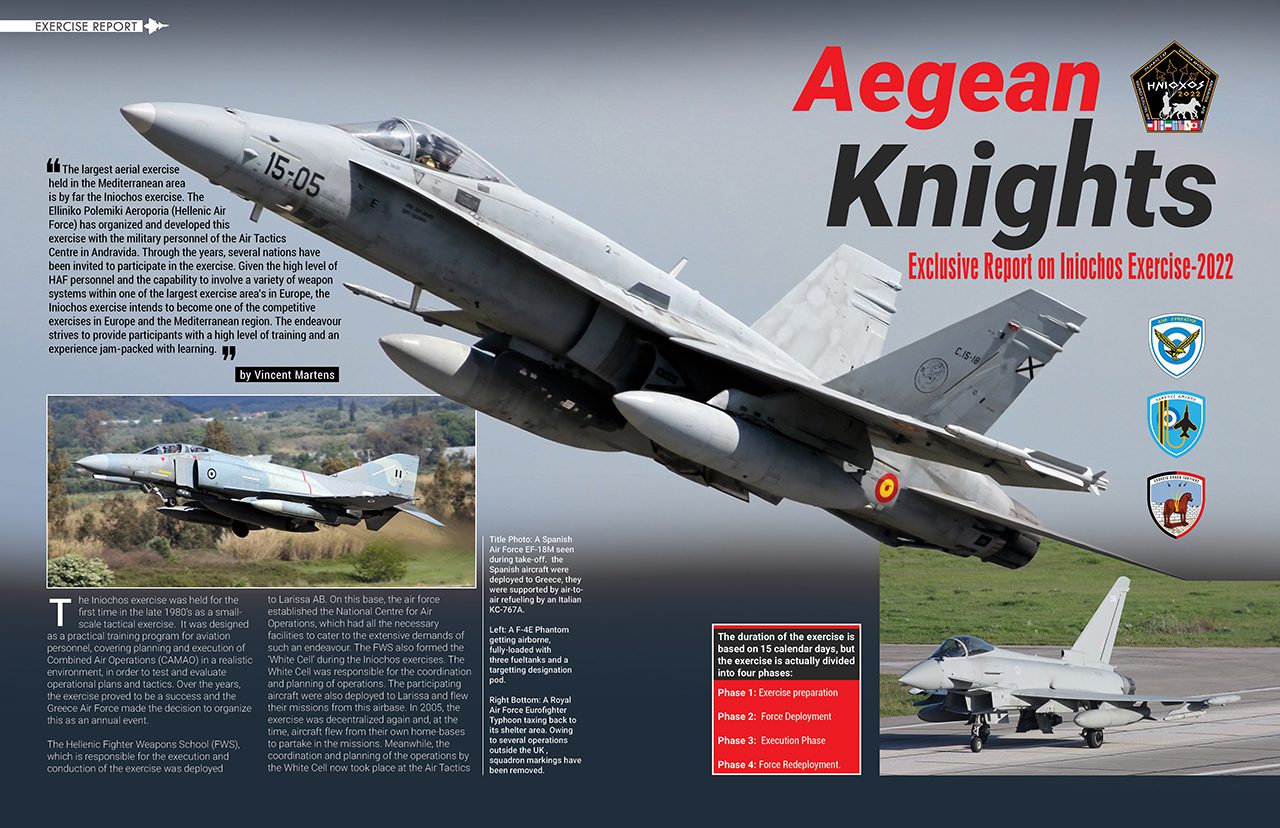Exclusive Report on Iniochos Exercise-2022
The Iniochos exercise was held for the first time in the late 1980’s as a small-scale tactical exercise. It was designed as a practical training program for aviation personnel, covering planning and execution of Combined Air Operations (CAMAO) in a realistic environment, in order to test and evaluate operational plans and tactics. Over the years, the exercise proved to be a success and the Greece Air Force made the decision to organize this as an annual event.
The Hellenic Fighter Weapons School (FWS), which is responsible for the execution and conduction of the exercise was deployed to Larissa AB. On this base, the air force established the National Centre for Air Operations, which had all the necessary facilities to cater to the extensive demands of such an endeavour. The FWS also formed the ‘White Cell’ during the Iniochos exercises. The White Cell was responsible for the coordination and planning of operations. The participating aircraft were also deployed to Larissa and flew their missions from this airbase. In 2005, the exercise was decentralized again and, at the time, aircraft flew from their own home-bases to partake in the missions. Meanwhile, the coordination and planning of the operations by the White Cell now took place at the Air Tactics Centre (ATC) and Fighter Weapons School facilities at Andravida Air Force Base. In November 2013 the air force once again decided to develop the exercise into an single base model and this was tested in 2014. The objective was to create a more realistic and demanding environment. In 2015, the air force decided to launch the exercise as an INVITEX (Invitation Exercise). For the first time, foreign countries were invited to be a part of the exercise and the Israeli Air Force and USAFE Special Forces became the first foreign participants. Since then, it has brought hundreds of participants together in on-site planning, briefing and debriefing. Participants are exposed to multiple-threat environments and have to develop multi-faceted plans to tackle each scenario effectively. The exceptional flying environment, the Egean Sea, does not have any restrictions. Because of the participation of the Greece Army, Navy and Special Forces different threat levels were implemented into the exercise through the years. More foreign countries have found the way to Andravida and the exercise is expanding rapidly.
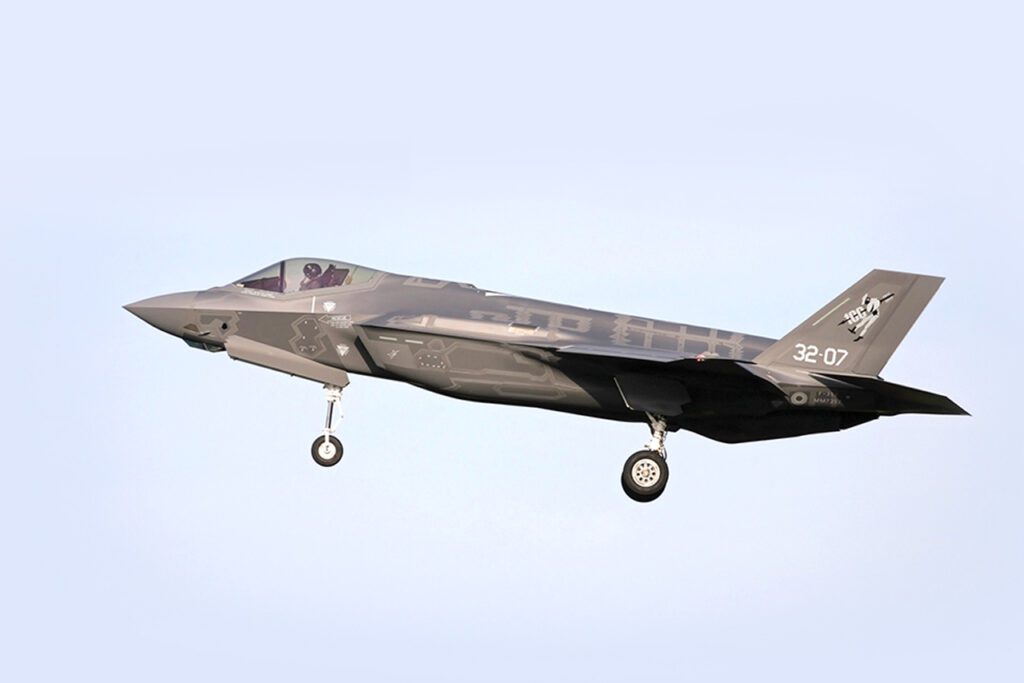
The FWS still has the responsibility to oversee the missions, from scenario planning up to the debrief. To make certain that the missions covered the full spectrum of missions flown currently by the HAF. Some of the missions flown are for instance;
- Air Operations versus Integrated Air Defence Systems
- Reconnaissance missions
- Combat Search and Rescue missions
- Time Sensitive Target Missions
- Dynamic Targeting / Strike Coordination and Reconnaissance / Close Air Support
- High Value Airborne Asset / Protect – Attack
- Slow Mover Protection
- Offensive Counter Air / Airfield Attack
- Air interdiction on special targets (bridges, power stations, vehicles)
- Anti-Surface Warfare
The prevalent scenario of the exercise is the escalation of local crises into a full scale international conflict. Naval and army forces provide the full scale threat and target array. During the exercise, the operation makes use of the majority of the Athens FIR. The Accurate Shot / Event Assessment is also an important part of the scenario. This is achieved with the use of on-board and off-board tracking data, sensors and specialized debriefing software. All these devises are used to reconstruct the missions, under the experience of Fighter Weapons School instructors who oversee the debriefing process.
The expected outputs of the exercise include developing inter-operability and standardization between HAF units and allied nations Air Forces, developing integration of tactics, techniques and procedures during air, land and air-sea operations, the use of legacy and modern assets integrated into a modern battlefield and preparing aircrews for any potential future battlefields. The mission commanders who plan the CAMAOs during the exercise are rotated daily. They plan, arrange and organize the available weapon systems, with the help of the other participating air forces. During the operational days, two missions are undertaken; one in the morning (take off time 10.00 hours local) and the second mission starts around 14.30 hours. The mission commanders also plan evening missions.
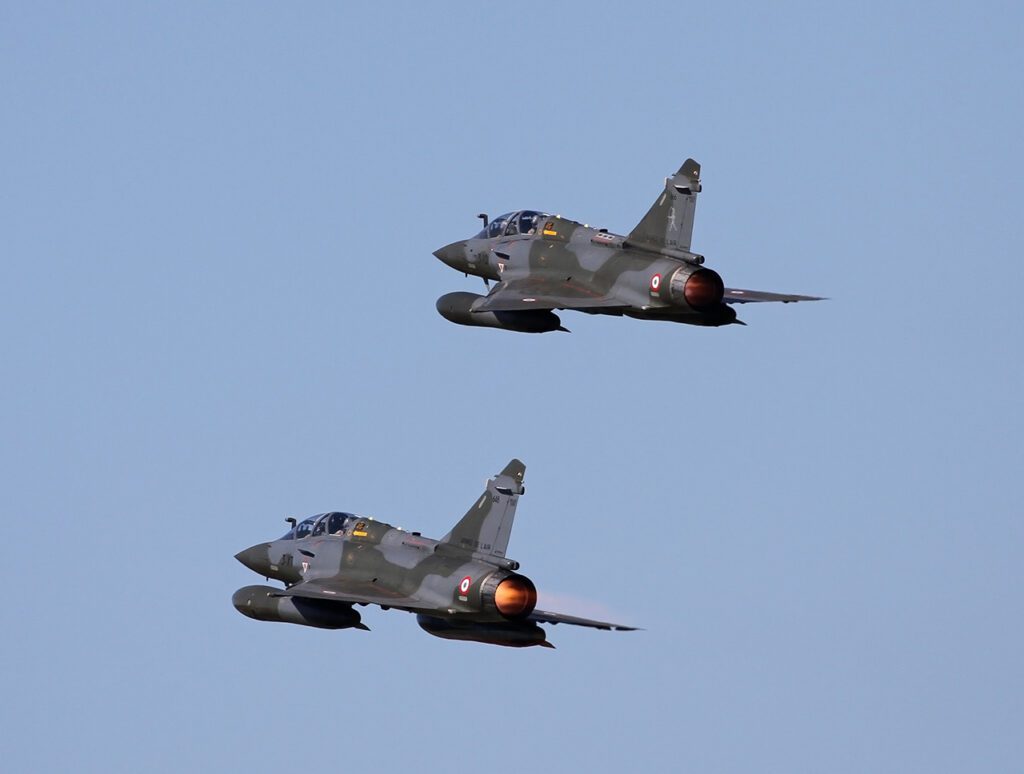
Participants in the morning missions fly mostly above the Ageon See, and the afternoon participants fly above the mountainous areas. On some days, local missions are flown before the actual Iniochos flight. These flights are planned to take not more than an hour, since the pilots have to be back at Andravida before the Iniochos morning mission. The exercise includes air refuelling aircraft, mostly one KC-135 from the USAF and occasionally also a KC-707 from the Israeli Air Force on standby.
For the first time in the history of the exercise, 3rd, 4th and 5th generation aircraft flew missions together during the 2019 edition. The participation of the Italian Air Force that year was of great importance for the exercise and the other participants. Six F-35s from the 32 Stormo and six Tornados from the 6th Wing were sent to Andravida. The Tornados were divided into three Tornado Interdiction Strike (IDS) aircraft and Tornado Electronic Combat Reconnaissance (ECR) aircraft. All this with about 200 pilots, navigators, technical and logistic personnel. The main objective for the ITAF was the integration between the F-35 and 3th and 4th generation aircraft. Crews of the 6th Wing and 32nd Stormo operated in complex and high-stake training scenarios. Pilots flew Composite Air Operations training flights that included Suppression / Destruction of Enemy Air Defence (SEAD and DEAD), Close Air Support (CAS), Defensive Counter Air and Offensive Counter Air (DCA /OCA). The Air to Surface Integration (ATOSI) between the three different generations of fighter aircraft was of great technical and educational importance. The F-35s flew side-by-side with the Tornado ECR from 155 Gruppo during Iniochos. This is relevant owing to the fact that the Lightning II is expected to replace the ECR Tornado in the future. The Tornado ECRs were flying SEAD and DEAD missions, while the Hellenic Land and Sea forces acted as enemy threats. To make these missions more realistic and challenging the Tornados flew with the CATM-88B captive air training missile. As part of large strike packages, the F-35 also carried out joint missions with the F-4E of the Hellenic Air Force. The Lightning II was equipped with both the MADL (Multifunction Advanced Data Link) and Link 16 that allows the aircraft to communicate with the other generation aircraft. Another exceptional fact was that aircraft from two fighter squadrons at Araxos Air Base (335/336 Mira F-16C/D) flew missions from their own airfield, while participating during Iniochos. Pilots from Araxos went to Andravida for briefing and debriefing because of the physical environment.
During the Covid-19 epidemic, Iniochos exercise could not be organized. But in 2021, Greece Air Force organized a ‘healthy’ exercise at Andravida. The organizers ensured enough space for the participating countries to operate in a safe environment. To achieve this, the Greece Air Force decided that all the local squadrons flying with the F-16C/D Block 52s would be relocated to Araxos Air Base, which is north of Andravida. Only one Block52 F-16C was at one point at Andravida because of the ‘Elephant walk’ exercise. A first-time participant was the Canadian Armed Force with experienced JTAC (Joint Terminal Attack Controller) teams. These teams are qualified service members who direct the action of a combat aircraft engaging in close air support and other offensive air operations. During the exercise, the JTAC teams were positioned into ‘hostile’ territory by the Cypriot National Guard using the AW 139 helicopter. Besides the Special Forces mission, the AW 139 also took part in the Combat Search and Rescue (CSAR) exercise.
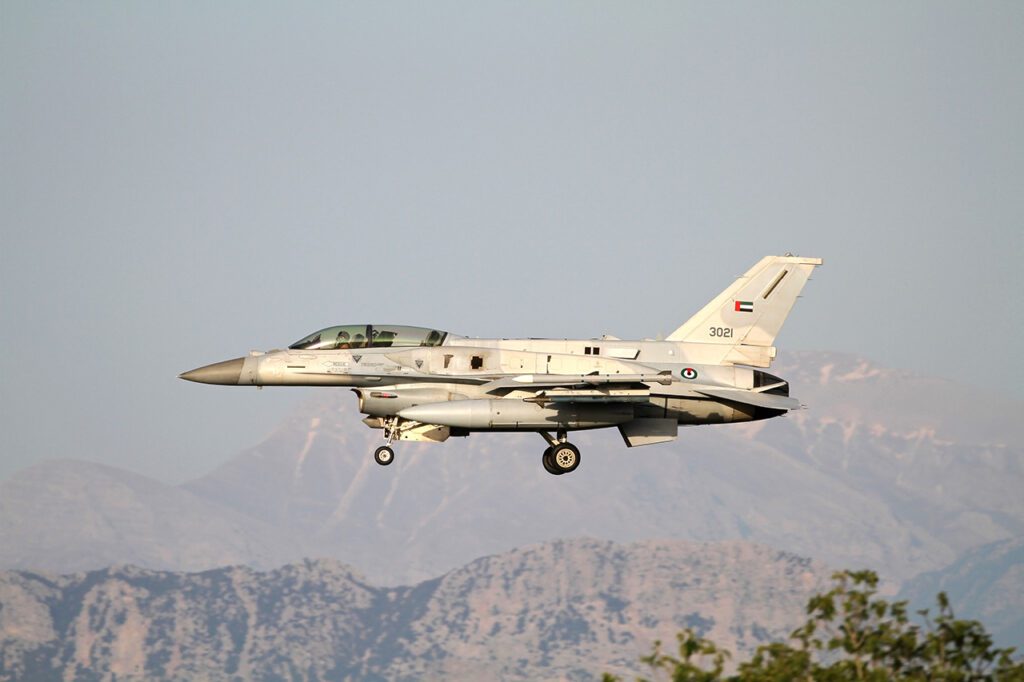
The Greece Ministry of Defence announced that the air force was going to receive the Dassault Rafale as a new fighter. Six second-hand Rafales were delivered in July 2021, while the new aircraft will be delivered in 2022 and in early 2023. A total of eighteen aircraft are ordered which will replace the Mirage 2000BGM/EGM. It did not come as a surprise that the year after the first deliveries were completed, the French Air Force participated in the Iniochos exercise. During the exercise, the French participated with air force and navy Rafales. It was perfect opportunity to display the capabilities of the Rafale to the Hellenic Air Force and other parties. Substantial interest was shown in the Rafale’s SPECTRA-EW suite (Self Protection Equipment to Counter Threats for Rafale Aircraft). This system is developed by Thales and MBDA and all the aircraft that are built or upgraded as F3-R standard will have this capability.
A regular customer of the Iniochos exercise is the Israeli Air Force. During the last years several squadrons were deployed and different assets were used. What is gained by the IDF and why do they keep returning to Andravida? A Deployment Commander of the Israeli Air Force explained; “A formation of Blue aircraft fly low on their way to strike an airfield belonging to the enemy, the Red forces. The threat is challenging and the complex mission requires tight cooperation between aircrews from different countries. We act as Blue and Red forces at the same time. Each side is unaware of the plans from the others. Every day, each division takes a whole day to come up with the best possible plan, and the results are then examined in the debrief. The threats and mountainous topography requires that we plan our mission as precisely as possible and try to avoid encountering hostile forces. During the exercise, we chose to focus on low altitude flight and airstrikes on hostile areas. The setup and the area prepared for the exercise cannot normally be achieved in Israel. Besides the air operations, the training and cooperation with international militaries is very beneficial, as well. From maintenance crews and planning on the ground up to mutual flight, we strive prove our position as a significant and powerful air force”. One of the IDF squadrons which participated in the exercise was the 117th squadron at that time flying the F-16C. A pilot of the 117th who participated in the exercise reveals, “The terrain is unfamiliar, the threats are different to what we are used to and we have to face great uncertainty. A large amount of aircraft in the air makes for a mess in the airspace, and communicating in English makes everything more difficult. This makes everything feel like a sort of Tower of Babylon, where we have squadrons from many nations utilizing various aircraft with each flight formation focusing on a different mission and utilizing different munitions”.
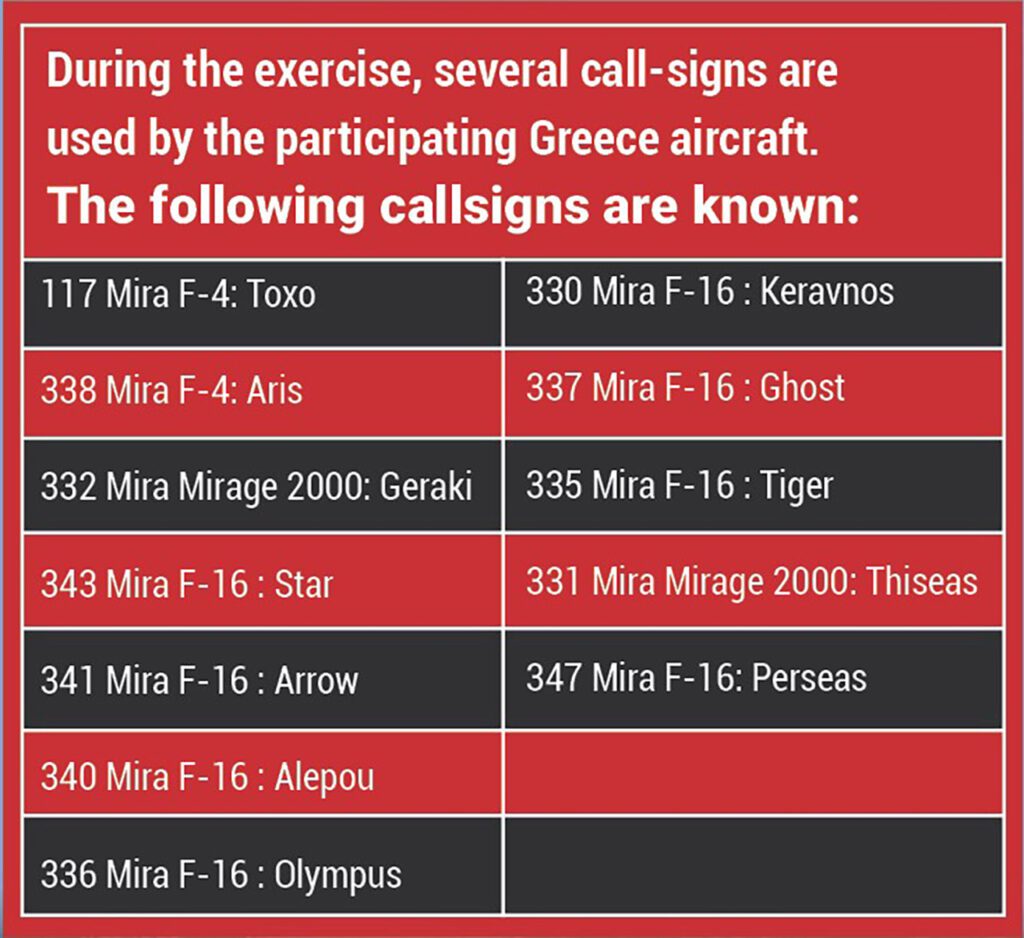
Such a large fighter jet deployment would not be possible without IDF Technical Department and the deployed soldiers who handled the field and aircraft maintenance. Explained by the commander of the Technical Department, “The main challenge in maintenance is doing it far from home, when we don’t have all our tools with us and our logistical support is limited. All we have is what we brought with us and we have to use that in order to succeed in our mission and help the aircraft take off safely. At all times, the Technical Department service members have to maintain the aircraft. The goal is to establish high-quality training for the aircrew members. Naturally, we are very curious regarding the ways other air forces maintain their aircraft, which are identical to ours. We participated in professional discourse with the US Air Force and learned about their maintenance ideology, as well as the organizational structure of their technical department”.
The participating units are divided into Blue and Red forces, usually flying both from Andravida. Araxos could also be used as mentioned earlier like during the epidemic. The Blue forces can fly multiple smaller and bigger waves per day, but not every squadron will participate in every mission. The Red forces mainly operate in air-to-air role, but the Hellenic Army and Navy with ground-based air defence systems and ground-based radar stations support the Red Forces. In the 2022 edition of the exercise, more than 1100 fighter sorties were flown during the 11 days of the exercise. If you include the air refueling, early warning, transport and helicopter missions, the total would be around 2500. The USAF also flew standalone missions, utilizing the Hellenic Air Force ranges. To give the exercise an even more realistic environment, during the Iniochos 2022, the Hellenic Navy also ran some exercises with all types of submarines and warships.
Because of covering the broadest spectrum of air operations and the participation of maritime assets, the countries that wish to take part are growing. Nations that participated already, with assets or as observers, are Israel, United States, Italy, Spain, France, Cyprus, United Arab Emirates, Canada, Germany, United Kingdom, Jordan, Kazachstan, Egypt, Austria, Slovenia and Romania. As a result of the growing participation, the Greece Air Force is looking for more space and accommodation. When one of the F-4 squadrons at Andravida was disbanded in 2017, the space and buildings were immediately used for the exercise. Also a taxi track that was out of use for some years was restored and became operational again. Regarding new participants, indications are that Egypt and Saudi Arabia want to participate next year. The Iniochos exercise has grown and expanded through the years. It is quickly becoming or is already the main medium-scale air exercise in Europe and the nearby Middle East countries, a no small feat.
